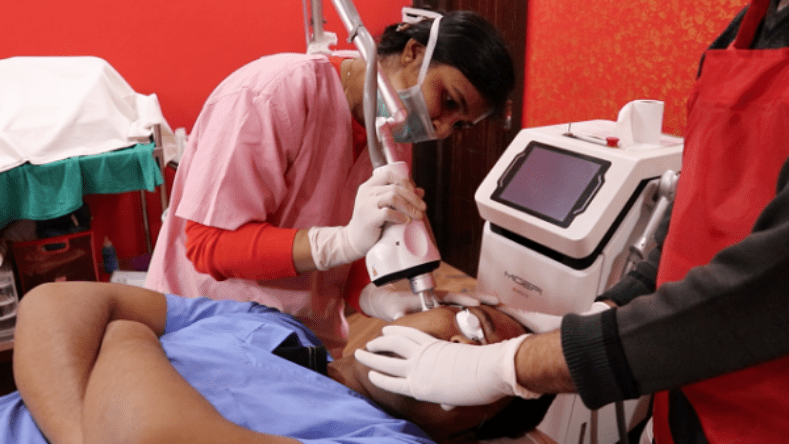In the ever-evolving world of medicine, one needs to invariably be on their toes and be updated about the ways they could step up in their profession. One such field is that of aesthetic medicine and cosmetic procedures. Preferred as an add-on after MBBS, BAMS, BDS, BHMS, and above; aesthetic medicine courses pack in a lot more than what meets the eye. Undertaking such a course would not only give physicians added expertise, but they can also incorporate aesthetic elements to their usual practice. Having said so, given the fact that not many people are aware of the course, in general, it is crucial to make them acquainted with the same. This blog will cover all that and more.
What is the correct definition of aesthetic medicine?
To accurately define aesthetic medicine, we might call it a branch that concentrates on the aesthetic goals and aspirations of the patients. In more simplistic terms, aesthetic medicine involves the modification of a patient’s physical appearance. It can be to enhance the face and body or to decrease the risk of diseases, including obesity. The physicians who practise this form of medicine are trained in both non-invasive and invasive procedures to meet the patient requirements.
Some of the major non-surgical procedures that fall under aesthetic medicine are:
- Laser hair removal
- Laser therapy
- Chemical skin peels
- Skin resurfacing
- Microdermabrasion
- Botox
- Fillers
- PRP
One of the principal reasons why physicians are looking for such add-on aesthetic courses is the fact that they generate more money. To incorporate them to the practice, every professional must have a plan of action in place. First off, have a comprehensive strategy regarding your offer. Find your comfort zone and stick to that by researching more about the topic. Several renowned institutes can give you an insight into the basics of aesthetic medicine, but learning from that and determining what you would like to add to your routine depends entirely on your expertise.
Dissecting various aesthetic medicine procedures
Any physician must understand the procedures they are about to perform and buy sufficient equipment for it. Some of the most popular options are hair removal, acne scars, wrinkles, vascular lesions, and skin tightening. So, let us dissect through them and see which of these would suit you the best.
- Laser Hair Removal: Also known as a method for permanent hair reduction, it gets rid of the unwanted hair on the body with the help of several technologies. Some of the most famous include IPL, Nd: YAG, and RF Electrical Energy. The places this can be performed are the face, legs, bikini area, and the arms.
- Microdermabrasion: This is a technique that freshens the skin and repairs the tanned and aged sections. The correct method to perform the procedure is by using a sandblaster to spray crystals on the face with suction to remove the outer dead layer of the skin. This method can be topped with several other techniques to get the best results out of it. An interesting part to note about this process is that there are two ways to perform it – one meant for aestheticians and the other more powerful one, for physicians.
- Botox: In this procedure, a non-surgical injection is used to temporarily reduce or even eliminate the frown lines and forehead creases. The toxin used in this blocks all nerve impulses and temporarily paralyses the wrinkle, or crease causing muscles.
- Chemical Peels: This aesthetic procedure uses glycolic or salicylic acids to get rid of the dead skin cells and improve the texture of the skin, in the process. These treatments can help in case of acne, blemishes, and uneven pigmentation of the skin. The formula for each patient depends on the condition of the skin and, as a result, differs.
- Photo Rejuvenation: As a minimally invasive procedure, it can efficiently treat sun damage, rosacea, broken capillaries, and photo-aged skin. It reduces redness, flushing, and spots. After the treatment, performed in six-sessions per cycle, the patient gains a healthier and younger-looking skin.
Now that you are aware of the various aesthetic medicine treatment options you can incorporate in your everyday work, it is time to decide which one appeals to you the most and set it to use. Once you have chosen it, ensure that you have a dream team in place. Or, if you are someone who is just beginning, join a clinic that has the most qualified doctors leading it. Do out-and-out marketing or promotion of your work so that your target clients know about your services.
Conclusion: Summing it up, always remember that in case you are looking towards expanding your list of practice and expertise, you must always be conscious about your surroundings. Keep yourself updated about the work that you are interested in and performing and cross-market yourself. The key to a successful career after undertaking aesthetic medicine courses is to gain experience and expertise.

